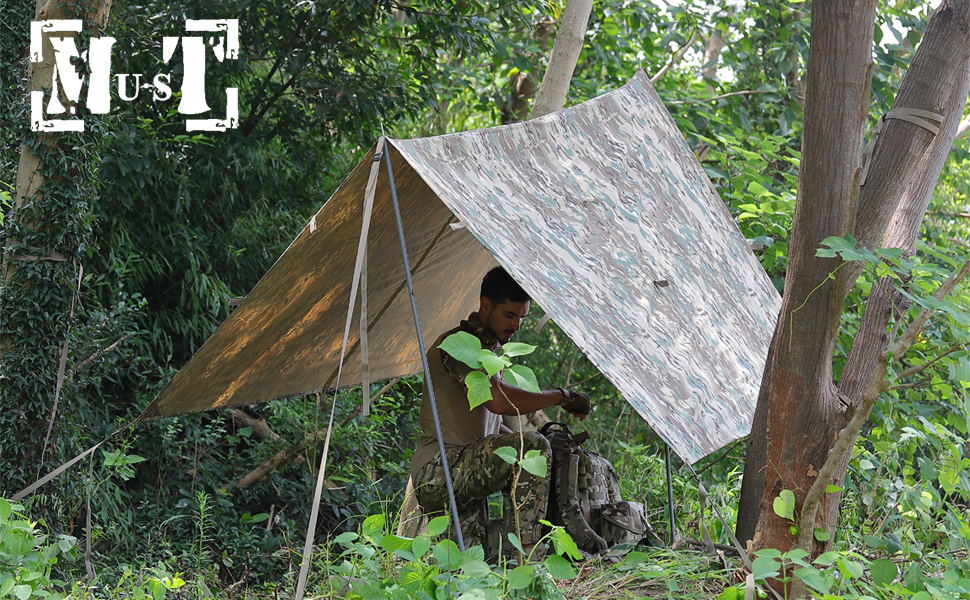Some people will say that it's over, that it's okay to spend a few nights in the jungle, so let's see how others have spent it in the simple (old) way.
If you sleep on the floor without pajamas on (more on that later), the cold, hard floor can put pressure on your hipbones and make for an uncomfortable sleep. The classic solution to this problem is to dig yourself a butt hole. It's not actually a hole, but more like a short, shallow furrow kicked out of the soil with your heel. It allows you to roll over in your sleep without having to place your other hip bone into exactly the same hole. Make this hip hole just a little wider than your waist, and make the hole about 5-8 cm deep.
If you sleep on the sand at the beach, or by a sandy creek, or even on a dune, you'll find it can be soft and comfortable without undue pressure on your buttocks, but it will suck the heat out of you . You will need insulation.
Insulation and comfort
Traditionally, a bushman's bed is a mass of soft shrub branches cut from nearby vegetation. Their function is to break the cooling effect with the ground while providing a soft and comfortable surface. We can also use other means to make the Bushman bed.
There are calico or canvas bags which are carried empty and filled at camp with dried fallen leaves, oak needles, grass, or leaves stripped from fallen timber. Not only does it provide comfort close to that of a feather mattress, but it also insulates when pressed against the weight of the sleeping person. In my experience, palm trees are the warmest, most comfortable beds you'll find in the jungle.
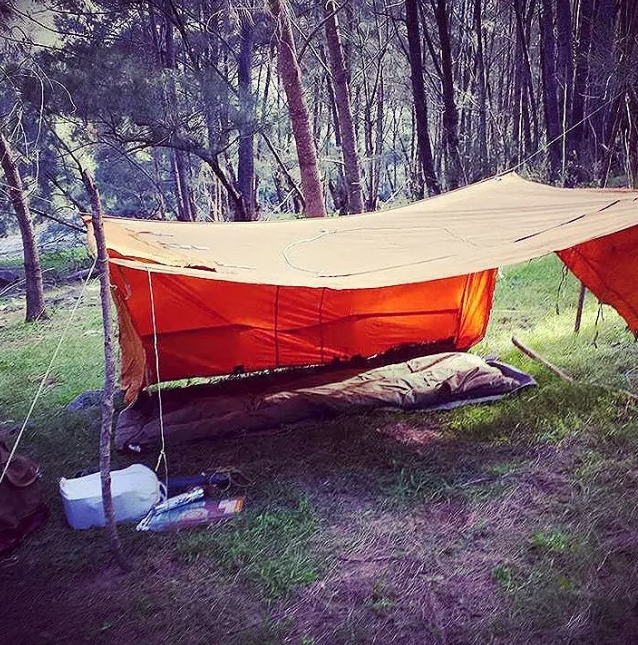
You could see a cotton sleeping bag liner stuffed with cedar needles used as a mattress on a recent bushwalk.
If you're willing to use nylon gear, you'll find those army-issue blown mattresses have a place here.
If traveling light, use multiple layers of newspaper between your sheets and bedding. Its insulation effect is particularly good. I have to say, I was very surprised the first time I tried it. Soft sand insulated with one or two layers of newspaper is perhaps the perfect bed. And it has multiple uses. For example, it can be used to light a fire in bad weather, or it can be used as toilet paper.
Tent cover
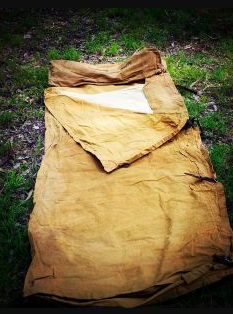
Vintage cloth bag set. This is made of linen canvas and dates back to 1940. It is an envelope style with straps and nickel plated brass buckles to secure the sides. This is an Australian Army officer's bed cover made by Evan-Evans Pty Ltd in Melbourne
Like those "traditional" envelope bags we see today, proper, fabricated pocket sleeves have only been in common use in Australia since the 1930s. That's not to say they're bad -- I use one myself on most trips. Before their advent, a tent cover was a piece of canvas or oilskin that was longer than the height of the user, and wide enough to cover the sleeper's bedding, or even tuck it under a little. It provides a layer of wind protection and a little protection from dew or light rain.
Blankets and pillows
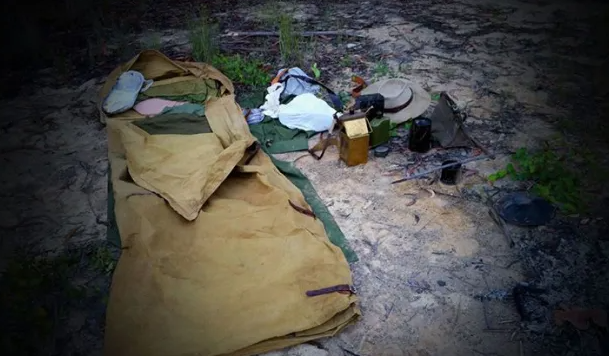
A rather untidy tented camp. Here, you can see a green lightweight wool army blanket in the tent, and a calico bag full of spare clothes that can be used as a pillow.
Futons are traditionally one of the more wool blankets, opt for light gray or blue. This is why the bag roll was named "Bluey". An army blanket is a great choice here, as it's usually 100% wool, is the right color (gray wool), and is usually long and wide enough to double up over the sleeper. Two blankets are obviously better than one in cooler weather, and using two blankets allows you to create a warm and roomy sleeping bag by carefully folding the two blankets together.
If using a blanket, you can still make a snug sleeping bag by using five or six blanket stitches to secure the sides and bottom of the folded blanket. The sleeping bag format is more effective than just using an open blanket because there is less chance for heat to escape from that side inside the quilt.
Sleeping ba
A down-filled sleeping bag from the 1960s, great for use with a sling.
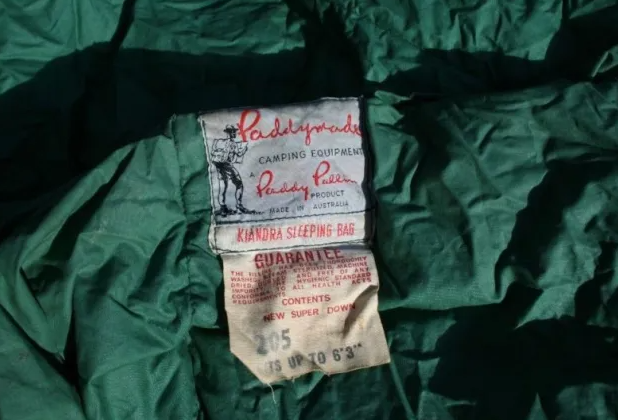
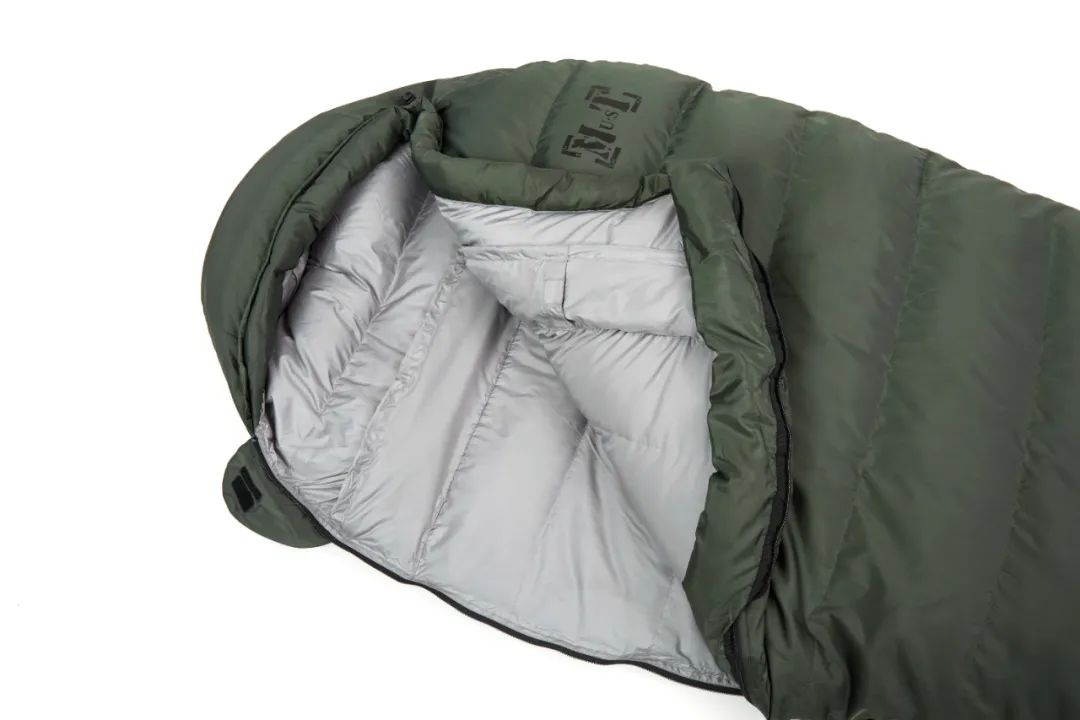 Having been in the cold and sleet, and even camping in the snow with my bags, I can tell you that sleeping bags are useful in extreme cold weather. In minus 10 degrees (C) snow, wool blankets are simply not up to the task.
Having been in the cold and sleet, and even camping in the snow with my bags, I can tell you that sleeping bags are useful in extreme cold weather. In minus 10 degrees (C) snow, wool blankets are simply not up to the task.
The warmest is feather and down filled sleeping bags, our Freelander sleeping bag filling is pure down, no smell, enough space, easy to carry and its warm effect is very good.
The classic bushwalker's down-filled sleeping bag. Bags like these have been around since the 1930s and were used by bushwalkers to carry luggage.
 CN
CN  US
US  DE
DE  JP
JP  RU
RU 